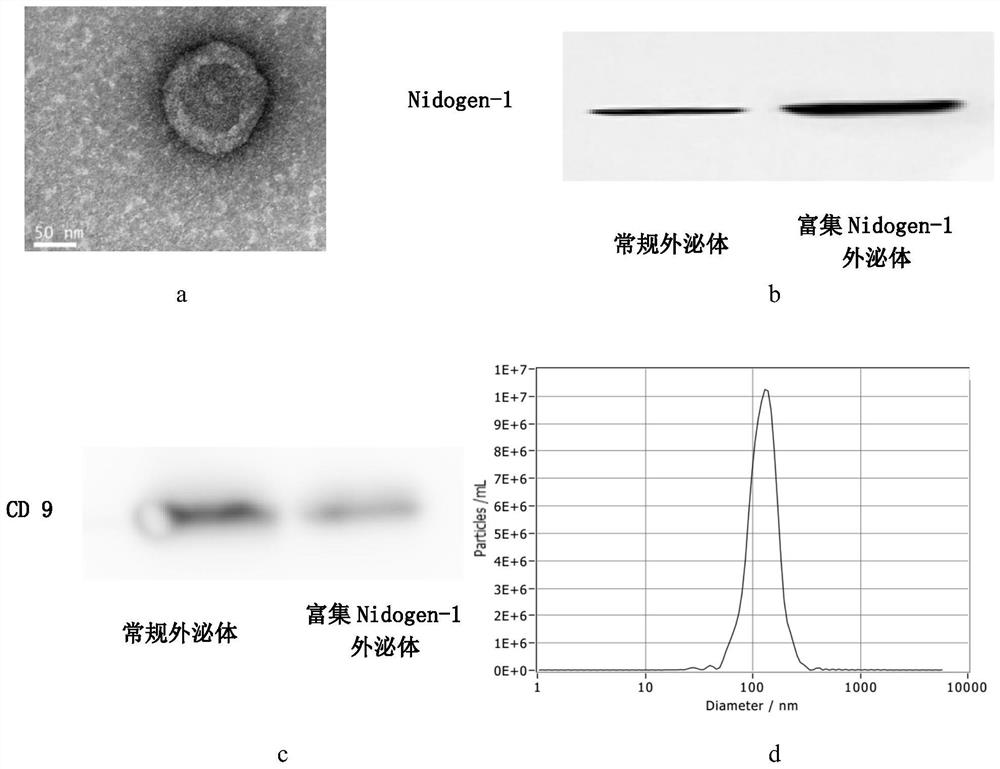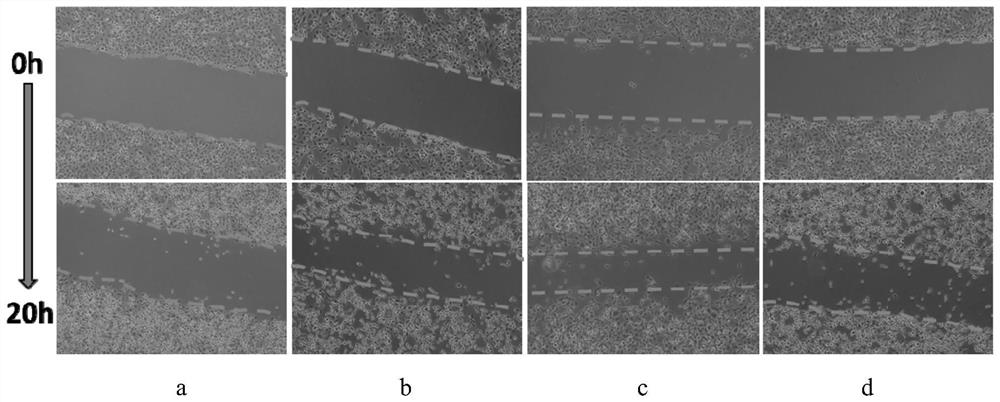Tissue engineering scaffold of composite exosome nidogen-1 and its preparation method
A technology of composite tissue and exosomes, applied in the field of medical biomaterials, can solve problems such as ischemia, hypoxia, and slow metabolism, and achieve the effect of promoting angiogenesis, accelerating the process of angiogenesis, and accelerating the repair of bone defects
- Summary
- Abstract
- Description
- Claims
- Application Information
AI Technical Summary
Problems solved by technology
Method used
Image
Examples
Embodiment 1
[0042] 1. Exosome collection
[0043] 1.1 Collection of bone marrow mesenchymal stem cell supernatant or serum
[0044] For bone marrow mesenchymal stem cells (BMSC): select 10-day-old rat pups (purchased from the Animal Experiment Center of Fourth Military Medical University in January 2017), kill them by neck dislocation, take out the femur and tibia, and cut off the metaphysis. Expose the bone marrow cavity, wash the bone marrow with culture medium (a-MEM + 10% fetal bovine serum + 1% penicillin / streptomycin double antibody), collect bone marrow mononuclear cells, separate and purify to P3 generation by adherence method, flow cytometry The expression of the surface markers was detected by surgery, and the cells (CD34-CD45-CD11b / c-CD90+) had a purity greater than 93% and could be used for the next test. The separated and purified cells were inoculated into culture flasks, and the serum-free medium was replaced when the cells were fused to 80%, and the cell supernatant was c...
Embodiment 2
[0079] According to the preparation steps of above example 1 ( figure 1 ), the present invention has actually carried out the experiments of multiple examples for different tissue engineering scaffold material components, and the proportioning ratio of the components in the preparation steps of each example is different, see Table 1 for details.
[0080] For the different examples in Table 1, sodium alginate is an organic compound derived from algae, which is low in price, has good biocompatibility, and is easy to cross-link. Adjusting the ratio of sodium alginate can obtain different mechanical properties (strength , toughness) scaffold material, the optimal ratio can be selected according to the mechanical properties of the repaired target organ. Hyaluronic acid is an acidic mucopolysaccharide with good biocompatibility. Different proportions of hyaluronic acid can be used to prepare repair scaffolds for different organs. For example, to prepare articular cartilage repair sc...
Embodiment 3
[0085] The difference from Example 1 is that the vascular endothelial cells were pre-treated with exosome Nidogen-1 in vitro, and the treated vascular endothelial cells were mixed with the liquid composite hydrogel to construct the tissue for the preparation of bionic bone scaffolds Engineering bracket. The results showed that vascular endothelial cells treated with exosomal Nidogen-1 can also promote cardiovascularization in the bionic bone scaffold, but the disadvantage is that the implantation of the bionic bone scaffold may lead to an immune response.
PUM
| Property | Measurement | Unit |
|---|---|---|
| diameter | aaaaa | aaaaa |
| diameter | aaaaa | aaaaa |
| pore size | aaaaa | aaaaa |
Abstract
Description
Claims
Application Information
 Login to View More
Login to View More - R&D
- Intellectual Property
- Life Sciences
- Materials
- Tech Scout
- Unparalleled Data Quality
- Higher Quality Content
- 60% Fewer Hallucinations
Browse by: Latest US Patents, China's latest patents, Technical Efficacy Thesaurus, Application Domain, Technology Topic, Popular Technical Reports.
© 2025 PatSnap. All rights reserved.Legal|Privacy policy|Modern Slavery Act Transparency Statement|Sitemap|About US| Contact US: help@patsnap.com



